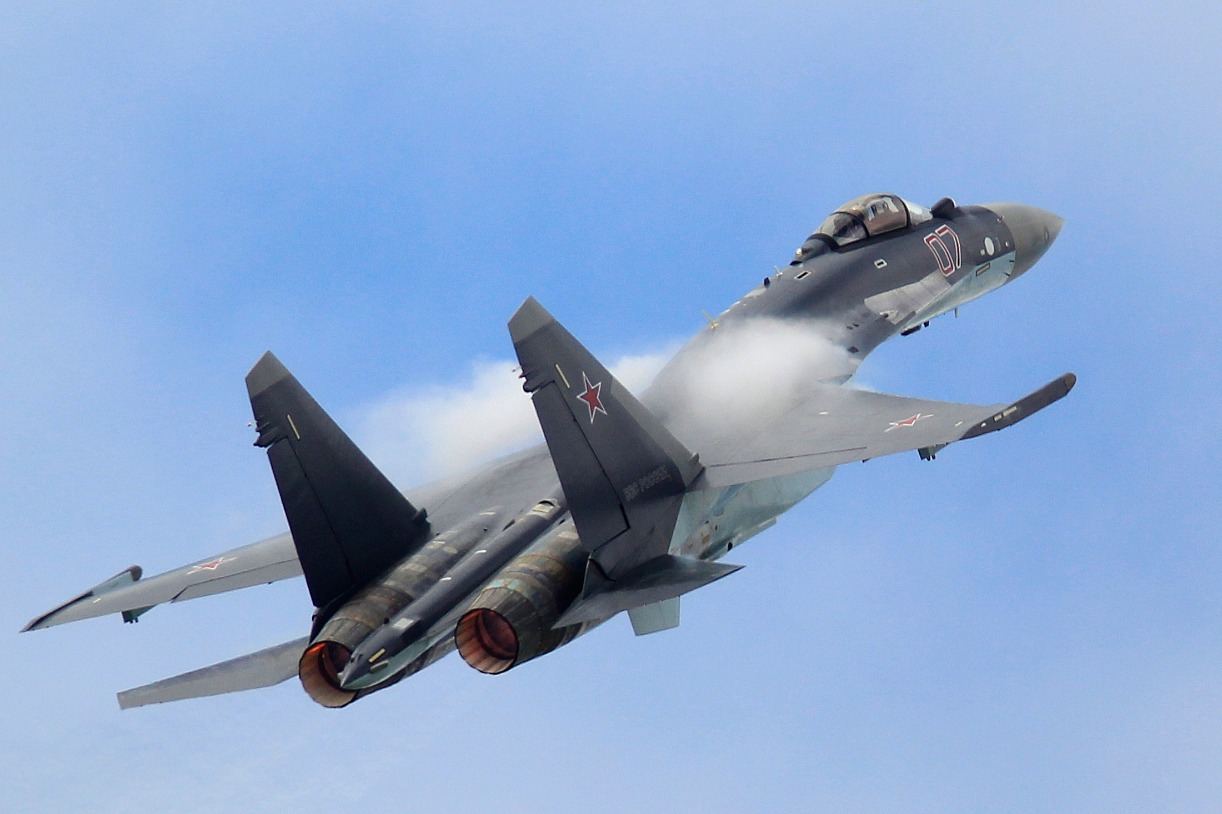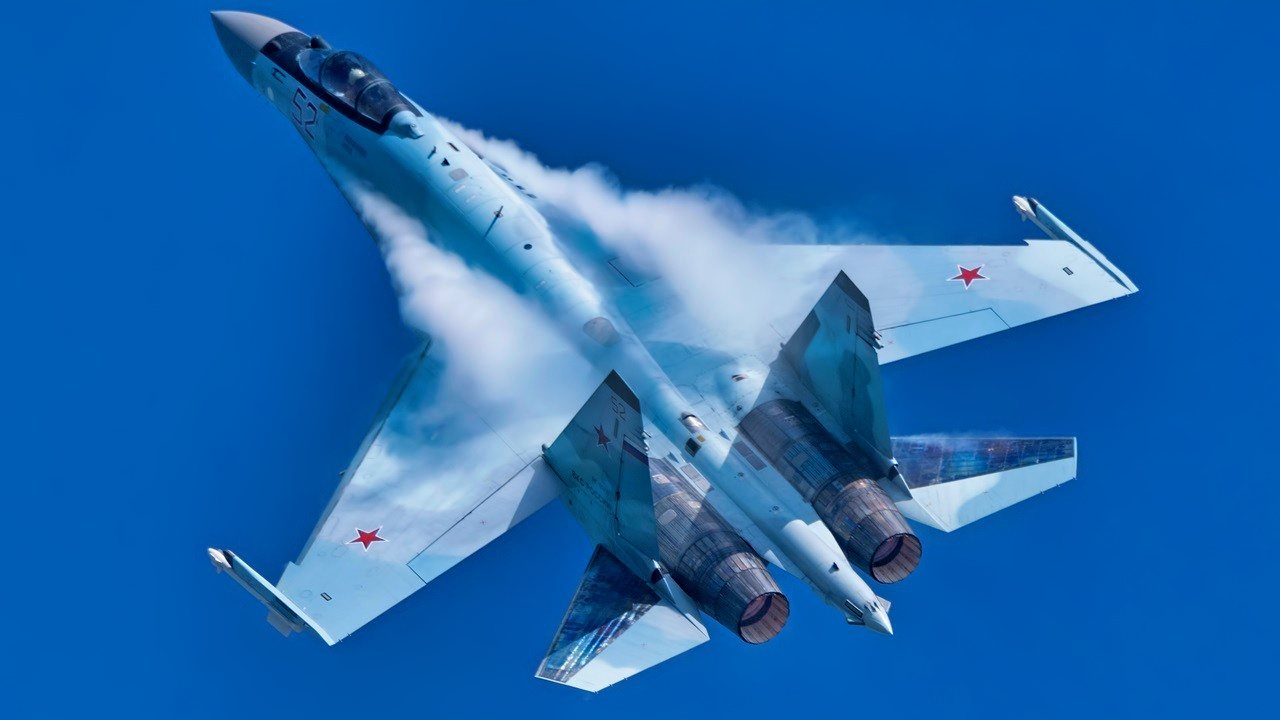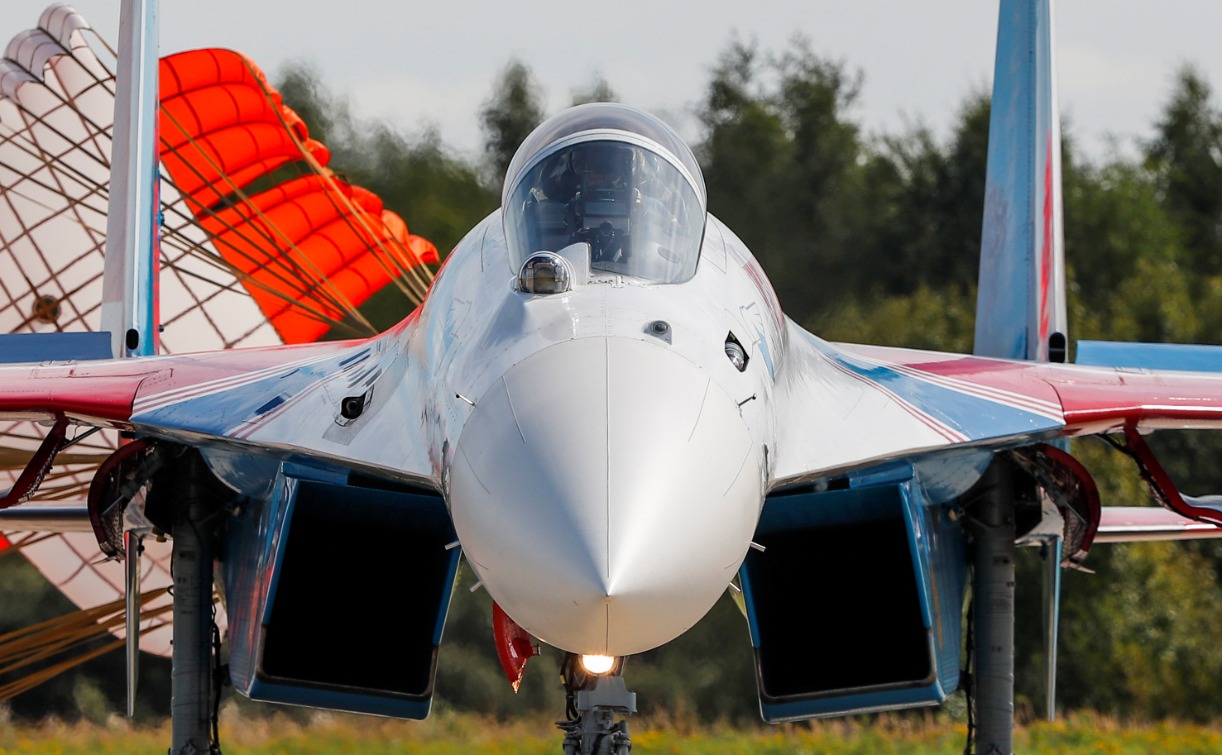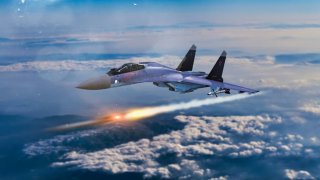Russia's Su-35 Flanker Fighter Nightmare Just Keeps Getting Worse
Despite the Su-35 Flanker’s purported specs and capabilities for many years now, the airframe has not performed as well as expected in Ukraine.
Summary: Russia's Air Force recently received a new batch of Su-35 "Flanker" fighter jets, a critical reinforcement given the significant aircraft losses sustained since the 2022 invasion of Ukraine.

Russia Bolsters Air Force with New Su-35 Jets Amid Ongoing Losses in Ukraine
-According to Oryx, Russia has lost numerous advanced aircraft, including Su-34s and Su-35s. The Su-35, developed from the Su-27 to match Western fourth-generation fighters like the F-15 Eagle and F-14 Tomcat, has seen production halt and restart due to economic constraints post-USSR collapse.
-Equipped with advanced radar and a wide range of armaments, the Su-35 has nonetheless struggled in combat against Ukraine, which is armed with sophisticated Western weaponry. Recent losses suggest a concerning trend for Russia's air capabilities, though the latest deliveries indicate ongoing efforts to sustain and potentially expand its aerial combat forces amidst ongoing conflicts.
Last month, Russia received its first 2024 delivery of Su-35 fighter jets from manufacturer United Aircraft Corporation. This batch comes at a good time for the Russian Air Force, which has suffered from debilitating aircraft losses since its Ukraine invasion first commenced back in 2022.

According to the open-source intelligence tracker Oryx, Moscow has lost at least two dozen of its Su-34s and a half dozen of its Su-35s in combat. Other than the “fifth-generation” Su-57 Flanker, these two platforms represent the most advanced fighters in Russia’s arsenal. Ukraine, equipped with a vast array of Western-delivered weapons from the United States and its NATO allies, has been successful in its strikes against these platforms.
Introducing the Flanker
Designated by NATO as the “Flanker,” Russia’s twin-engine, supermaneuverable air superiority Su-35 platform remains a critical component of the Russian Air Force. The platform was developed from the earlier Su-27, designed to serve the Air Force as a highly maneuverable aircraft able to compete with America’s own arsenal of fourth-generation airframes during the Cold War. The McDonnell Douglas F-15 Eagle and Northrop Grumman F-14 Tomcat were particularly threatening to the Soviet Union’s rapidly aging arsenal of fighter jets during this time period. Ultimately, the Flanker became the designation for two improved variants of the Su-27 and took its maiden flight in the 1980s.
Specs & capabilities
Following the collapse of the USSR, Su-35 production was halted due to budgetary constraints. At this point, only a dozen of these airframes were actually constructed. By the time Russia picked back up its Su-35 production years later, a slightly modified variant emerged—the Su-35M. This platform is equipped with the N035 Irbis-E passive electronically scanned array radar, capable of detecting an aerial target more than 250 miles away.

An OLS-25 optoelectronic targeting system is also incorporated into the airframe. In terms of armament, the Flanker is well-equipped. Each of these fighters can carry air-to-air missiles of up to a 190-mile range and can sport the heavier Oniks anti-ship cruise missile as well as an array of other air-to-ground weaponry. According to Airforce Technology, the Su-35 also features countermeasures and guns like a radar warning system, jammer, and the Gryazev-Shipunov 30mm GSh-30-1 gun.
How has the Su-35 Flanker Fighter fared in Ukraine?
Despite the Su-35 Flanker’s purported specs and capabilities, the airframe has not performed as well as expected in Ukraine. In February, Forbes reported that Russia had lost “six of their 120 Su-35s.” But the rate is accelerating and becoming unsustainable. “The Russian air force has lost 95 jets since February 2022,” Forbes reported. “That’s four per month. In [February 2024], however, the air force has written off warplanes at a rate of 60 per month.”

If Russia keeps losing its top-tier fighter jets at this rate, the ongoing invasion may be over sooner than expected. However, the new batch of Flankers recently delivered to Moscow indicates that the Kremlin is prioritizing sustaining its fighter fleet to the best of its ability while not compromising its war effort.
About the Author: Maya Carlin
Maya Carlin, National Security Writer with The National Interest, is an analyst with the Center for Security Policy and a former Anna Sobol Levy Fellow at IDC Herzliya in Israel. She has by-lines in many publications, including The National Interest, Jerusalem Post, and Times of Israel. You can follow her on Twitter: @MayaCarlin.


